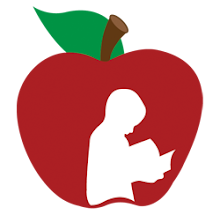Summer is in full swing for most of the country by now. If your child is anything like mine, he’s slept in late, has a nice tan going, and has already had a ton of outdoor fun. What you may not realize though, is that while your little one is engaged in all of these summer festivities, he may actually be moving backwards academically.

The Summer Slide and How It Affects Your Child
I know what you’re thinking—your child’s brilliant; he’ll catch up next year, right? Not so fast! The summer slide affects even the best of students. What’s the summer slide?, you might ask. Well it’s not an amusement park attraction, unfortunately. “Summer slide” is a term that many educators use to refer to the loss of learning that students experience during the summer. A 2011 report released by the RAND Corporation revealed that on average, students lose about a month’s worth of instruction during those long, lazy days of summer.
What to Do About the Summer Slide
Can you prevent the summer slide? Absolutely! Will your kids hate you for it? Not necessarily. There are some ways that you can sneak in learning without your kid feeling like she’s being forced to “study” and robbed of her much-deserved summer fun. Here’s how:
Reading can and should be fun, and therefore, makes an ideal summer learning activity. No matter how old your child is, there’s likely a summer program just right for her at your local public library. Lure your youngster in by signing up for some fun activities like puppet shows, movie nights, and scavenger hunts, for instance.
As you’re wrapping things up, make sure to encourage your child to check out a few books on the way out. Then, you’ll have a reason to return with her in a couple of weeks when the books are due! As your child makes her book selections, be sure that the titles are equally engaging and challenging. While there is plenty of “brain candy” out there, your youngster will only benefit if the text is on or above her reading level.
Choosing appropriate reading material will help your child increase her vocabulary, fluency, and comprehension skills while simultaneously providing some much-needed summer entertainment.
If you’re short on time and just can’t make it to the library, there are lots of other reading resources out there that, thanks to technology, you can access instantly without even having to leave the house. Try some storybook sites like Storyline Online and Children's Storybooks Online. In addition, if you’re lucky enough to have an e-reader like a Kindle, Nook, or iPad, you have access to hundreds of interactive storybooks and educational games that can help your child practice reading skills in a way that he’ll find fun and engaging!
Looking for more incentives to keep your child’s nose in a book this summer? Check out Scholastic’s Summer Challenge and Book Adventure, online summer reading programs that allows kids to log their reading minutes and win prizes.
- Assign Summer Research Projects
Not the traditional variety, of course. There’s just one rule for summer research—it must be fun! Short on ideas? Consider having your child research potential vacation activities and create an agenda based on his findings. If your child uses a safe social media site like Edmodo, for instance, have him poll his classmates and create charts and graphs that represent favorite class books, summer activities, or movies.
The temperate summer days provide the perfect opportunity to get outdoors with your child and explore the world around you. Outdoor activities not only provide some beneficial physical activity, but with a little planning, they can also be highly educational. By interacting with the world around you, you’ll inevitably be sneaking in some science education as well. Need some ideas? Check out these fun summer science projects that you and your child can do together.
What are your favorite summer learning activities? Share your ideas in the comments section!
Red Apple Reading Express blog sponsored by Red Apple Reading, online educational children's software that helps young children learn how to read. Save an extra 15% on any subscription with promo code: BLOG15Labels: books, child, children, educators, instruction, kids, learning, library, parents, reading, Red Apple Reading, school, students, summer










